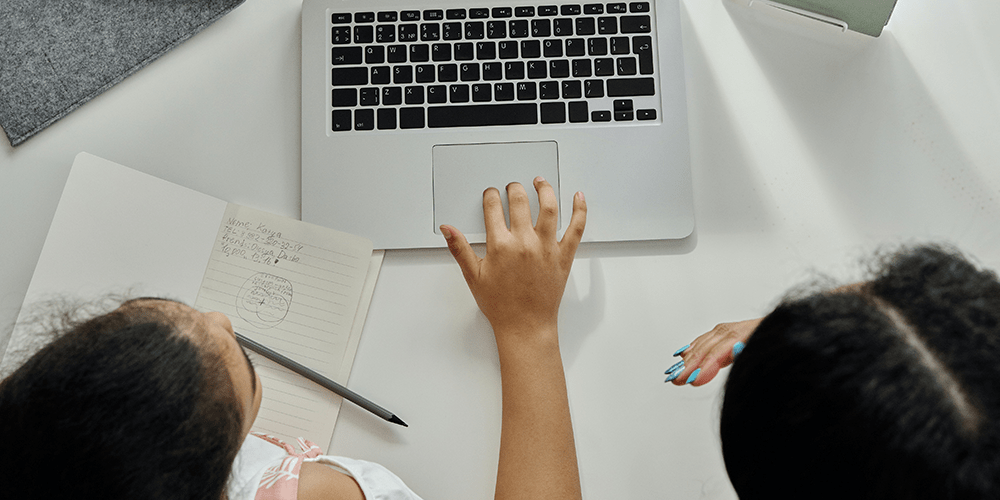When Google runs your classroom: teaching in lockdown
Last month, Croydon Digital hosted a virtual round table with school teachers in the borough who came together to share notes on how they adapted their approach to teaching during lockdown.

Since the coronavirus crisis shut down our schools and offices, digital technologies have enabled many of us to carry on working and learning effectively in what seems to be the “new normal”. Adults, students and schoolchildren have all had to embrace change and quickly become comfortable with using various remote tools available on a daily basis.
With a range of web services and video conferencing tools on offer, we thought we’d catch up with some of our local schools to hear who’s been using what, and find out how teachers, children and their parents felt about these new ways of working.
The key points from the discussion are summarised below.
What worked well?
Virtual lessons and file sharing
Services such as Screencastify, which enables teachers to either record their screens or participate in virtual lessons, have worked well and using Rubrics proved to be an invaluable grading and feedback tool. This will continue to be useful from September as it avoids teachers having to physically collect homework books.
Microsoft Teams has also proved popular, both for lessons and for students to upload their assignments and keep track of due dates.
Web services such as Google Classroom have streamlined the process of sharing files between teachers and students and has been positively received by both.
Tracking homework
Show my homework is a digital platform that allows teachers to set work for the week and timestamp when students need to submit it by. Teachers can run a report and if more than one piece of work is missed, staff are sent a spreadsheet to contact the students’ homes and offer assistance where necessary.
Alternative contact
The teachers have also been keeping in touch with students via phone and email, particularly with those who need additional support.
One secondary school teacher commented: “We have been offering weekly live webinars connecting students to employers from different industries, giving youngsters the opportunity to ask questions and develop their career thinking.”
Fostering independence
The response to digital learning and using platforms to set and schedule work has been encouraging. Several schools commented that students have had to be more accountable and reactive with logging on to resources to look for their schedules, which for primary school children has helped to give them more independence in preparation for secondary school.
Challenges
Unequal access to technology
Some students didn’t have access to a computer, which limited the extent to which they could participate. To help with this, some schools were able to invest in laptops and Chromebooks and loan these to students.
Our schools also acknowledged some parents’ struggles battling limited access to devices and connectivity, particularly those working at home with several children in the house. This has meant that teachers have had to strike a balance of making work available online and offline.
A secondary school teacher explained: “We began with scheduling lessons at the date and time lessons were due but this was quickly amended so that all lessons scheduled for the day were released at 08.00hrs. This has been helpful for families who share a computer as they are able to see what is needed and plan the computer use accordingly.”
Another school posted paper packs for students to complete in exercise books and asked them to use Google Classrooms primarily for understanding what they needed to do.
Schools have also had to put extra effort into being accessible to harder-to-reach pupils. For example, making sure that EAL (English as an Additional Language) and one-to-one teaching is still provided to students with special educational needs, and that they have felt supported throughout.
Homeschooling hardships
Working parents haven’t always been able to closely supervise their children during the day due to their own commitments. Inevitably this means helping them in the evenings after their own working day.
Loss of (social) connection
The general consensus at the round table was that that the class dynamic has been absent, and that lockdown has proved especially tricky for students who don’t have a close circle of friends.
To mitigate this, some schools have permitted students to join lessons earlier for a ’10-minute social’ with their friends and are considering doing this in September to ease students back to the normality of physical interaction.
Data privacy concerns
Concerns were shared around teachers using their own personal devices to contact students, due to sensitivities around the data that is stored. Many organisations have been provided with separate devices for this reason.
Schools’ report
Overall, despite the complexities and challenges around teaching in this way, our teachers agreed that the positives far outweigh the challenges. Their students have largely flourished and become more independent over a short space of time.
They are unanimous in their view that, while technology will never replace the classroom, it will always form a key part of teaching and learning as the future looks set to move towards a new hybrid solution.
Full marks for attendance!
A huge thank you to St Cyprian’s Greek Orthodox Primary, Elmwood Junior School, Harris Academy South Norwood, Park Hill Junior School, Riddlesdown Collegiate, St Joseph’s College, Archbishop Tenison’s and Winterbourne Junior Girls’ School for taking the time to participate and share their experiences with us.

